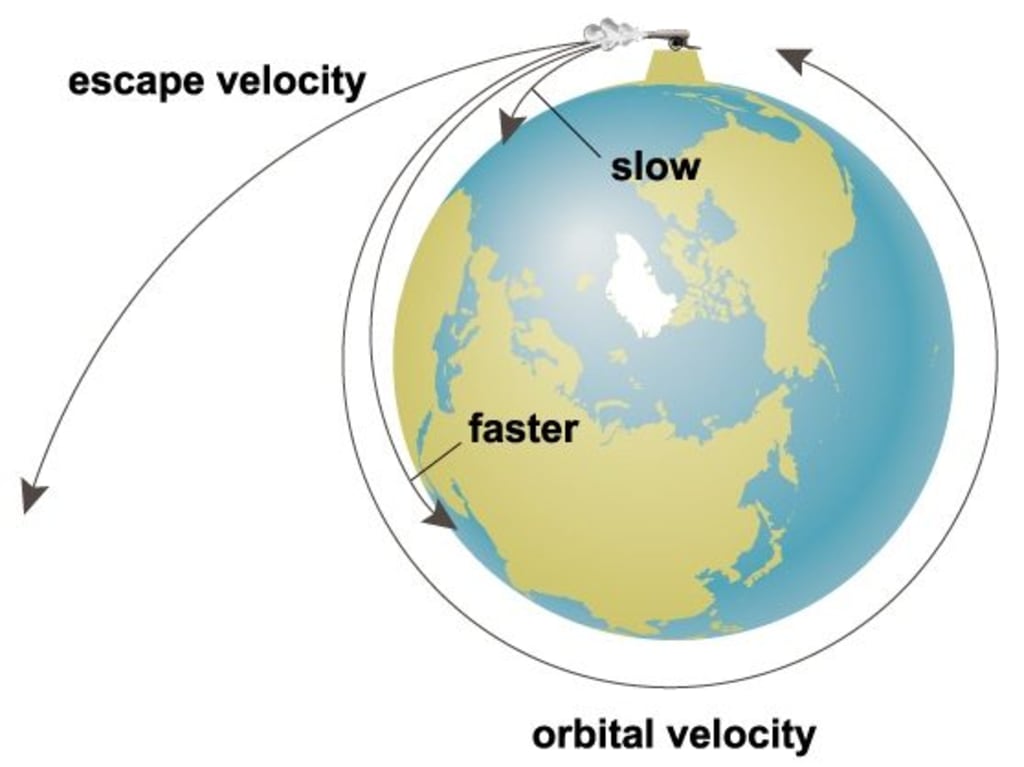Escape Velocity: Understanding the Physics Behind It
Escape Velocity

Escape velocity is a fundamental concept in physics that describes the speed an object needs to reach to escape the gravitational pull of another object. It is the minimum velocity required to overcome the gravitational attraction of an object and move away from it indefinitely. In this blog post, we will explore the concept of escape velocity in more detail and discuss its significance in space travel.
The Science of Escape Velocity
Escape velocity is the speed required to overcome the gravitational pull of an object. It is calculated using the mass and radius of the object as well as the gravitational constant. Mathematically, the escape velocity (V) can be calculated using the following equation:
V = √(2GM/R)
Where G is the gravitational constant, M is the mass of the object, and R is the distance from the center of the object to the point where the escape velocity is being calculated. The escape velocity increases as the mass of the object increases or as the distance from the object's center decreases.
For example, the escape velocity from Earth's surface is approximately 11.2 km/s. This means that any object that wants to escape Earth's gravitational pull needs to achieve a speed of at least 11.2 km/s. If an object does not reach this speed, it will remain in orbit around Earth or fall back to the surface.
Importance of Escape Velocity in Space Travel
The concept of escape velocity is crucial in space travel. It is the minimum speed that a spacecraft needs to achieve to escape the gravitational pull of a planet or moon and continue on its journey. Without achieving the required escape velocity, a spacecraft would be unable to leave the gravitational field of the planet and would eventually fall back to its surface.
For example, when a rocket is launched into space, it needs to achieve a speed greater than the escape velocity of the planet it is leaving. This requires a tremendous amount of energy, which is provided by the rocket's engines. Once the rocket achieves the required speed, it can escape the planet's gravitational field and continue on its journey.
Similarly, when a spacecraft is approaching a planet, it needs to achieve the correct speed and trajectory to enter the planet's orbit or land on its surface. If the spacecraft's speed is too low, it will be captured by the planet's gravity and fall towards its surface. On the other hand, if its speed is too high, it will escape the planet's gravity and continue on its journey into space.
Real-World Examples of Escape Velocity
There are many examples of escape velocity in our solar system. For instance, the escape velocity from the surface of the Moon is 2.38 km/s, which is much lower than that of Earth. This means that it requires much less energy to escape the Moon's gravity compared to Earth's gravity.
Similarly, the escape velocity from the surface of Mars is 5 km/s, which is lower than that of Earth but higher than that of the Moon. This means that it requires more energy to escape Mars' gravity compared to the Moon's gravity, but less energy compared to Earth's gravity.
Conclusion
In conclusion, escape velocity is an essential concept in physics that describes the minimum speed an object needs to achieve to escape the gravitational pull of another object. It is critical to space travel and exploration, as it is the minimum speed required for a spacecraft to escape a planet's gravity and continue on its journey. Understanding the physics behind escape velocity is essential for scientists and engineers working in the space industry, as it helps them design and launch spacecraft that can explore our universe.





Comments
There are no comments for this story
Be the first to respond and start the conversation.